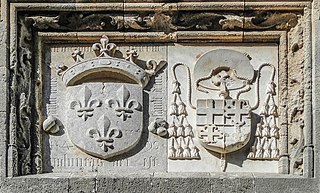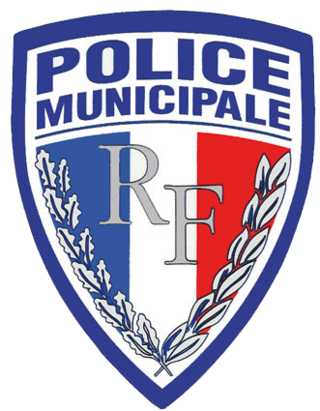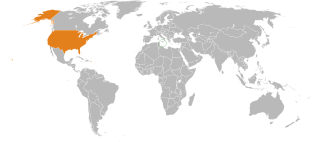Procedural law, adjective law, in some jurisdictions referred to as remedial law, or rules of court, comprises the rules by which a court hears and determines what happens in civil, lawsuit, criminal or administrative proceedings. The rules are designed to ensure a fair and consistent application of due process or fundamental justice to all cases that come before a court.

In the United States, a district attorney (DA), county attorney, state's attorney, prosecuting attorney, commonwealth's attorney, state attorney or solicitor is the chief prosecutor and/or chief law enforcement officer representing a U.S. state in a local government area, typically a county or a group of counties. The exact name and scope of the office varies by state. Alternative titles for the office include county attorney, solicitor, or county prosecutor. Generally, the prosecutor represents the people of the jurisdiction and in many states their authority stems from the state constitution. Unlike similar roles in other common law judicial systems, these are elected, and their holders usually have an allegiance to a political party or faction, rather than being held by a career civil servant appointed on merit in an independent process.

Fra' Emmanuel Marie des Neiges de Rohan-Polduc was a member of the wealthy and influential Rohan family of France, and Prince and 70th Grand Master of the Order of St. John from 1775 to 1797.
The structure of the judiciary of Texas is laid out in Article 5 of the Constitution of Texas and is further defined by statute, in particular the Texas Government Code and Texas Probate Code. The structure is complex, featuring many layers of courts, numerous instances of overlapping jurisdiction, several differences between counties, as well as an unusual bifurcated appellate system at the top level found in only one other state: Oklahoma. Municipal Courts are the most active courts, with County Courts and District Courts handling most other cases and often sharing the same courthouse.

The Court of Cassation of Belgium is the supreme court of the Belgian judiciary. The court is composed of thirty judges with life tenure who are nominated by the High Council of Justice of Belgium and appointed by the Belgian federal government. The court handles cases in the two main languages of Belgium, Dutch and French, and provides certain facilities for cases in German. The court is assisted in its work by a public prosecutor's office and a bar association, which both function separately from other structures. The duty of the public prosecutor's office is to provide advisory opinions to the court on how the law ought to be interpreted and applied. The attorneys of the court's bar association assist litigants in proceedings before the court; in certain cases, their assistance is mandatory.

A langue or tongue was an administrative division of the Knights Hospitaller between 1319 and 1798. The term referred to a rough ethno-linguistic division of the geographical distribution of the Order's members and possessions. Each langue was subdivided into Priories or Grand Priories, Bailiwicks and Commanderies. Each langue had an auberge as its headquarters, some of which still survive in Rhodes, Birgu and Valletta.

The Castellania, also known as the Castellania Palace, is a former courthouse and prison in Valletta, Malta that currently houses the country's health ministry. It was built by the Order of St. John between 1757 and 1760, on the site of an earlier courthouse which had been built in 1572.

The National Library of Malta, often known as the Bibliotheca, is a reference library in Republic Square, Valletta, Malta. It was founded by Grand Master Emmanuel de Rohan-Polduc in 1776 out of the collections of the knight Louis Guérin de Tencin. It has been a legal deposit library since 1925, and it has the largest collection of Melitensia along with that of the University of Malta. The library also contains the archives of the Order of St. John, the Università of Mdina and the Università of Valletta.

The municipal police are the local police of towns and cities in France outside the capital. There are 18,000 municipal police officers in 3,500 communities. The municipal police are one of the three components of French policing, alongside the National Police and the National Gendarmerie, with about 145,000 police and 98,000 soldiers respectively.

According to a 2010 American Community Survey, there are roughly 35,103 Maltese Americans residing in the United States.

Prostitution in Malta is itself legal, but certain activities connected with it, such as running a brothel and loitering, are not. Certain offences are punishable by sentences of up to two years in prison. In March 2008, police and the Malta Ministry for Social Policy signed a memorandum of understanding to formalize a screening process for all arrested persons engaged in prostitution to determine whether they were victims of trafficking or other abuses. The law provides punishments of up to 6 years for involving minors in prostitution.

Bench used in a legal context can have several meanings. First, it can simply indicate the location in a courtroom where a judge sits. Second, the term bench is a metonym used to describe members of the judiciary collectively, or the judges of a particular court, such as the King's Bench or the Common Bench in England and Wales, or the federal bench in the United States. Third, the term is used to differentiate judges, who are referred to as "the bench", from attorneys or barristers, who are referred to as "the bar". The phrase "bench and bar" denotes all judges and lawyers collectively. The term "full bench" is used when all the judges of a certain court sit together to hear a case, as in the phrase "before the full bench", which is also referred to as en banc.
Giovanni Niccolò Muscat was a Maltese doctor of law, and a major philosopher. His area of specialisation in philosophy was chiefly jurisprudence.
Francis Saviour Farrugia was a minor Maltese philosopher, doctor of law, and legislator. He specialised in jurisprudence.
The law of Malta incorporates continental law, common law and local traditions, such as Code de Rohan. A municipal code was enacted in 1784 and replaced in 1813. Maltese law has evolved over the centuries and reflected the rule of the context of the time. At present Malta has a mixed-system codification, influenced by Roman law, French law-Napoleonic Code, British law-Common Law, European Union law, international law, and customary law established through local customs
Mikiel'Ang Grima was a Maltese surgeon during the times of the Knights of Malta. He was particularly adept at traumatic surgery. Grima was able to open bladders and remove stones in only two and a half minutes.

The Auberge de Bavière is a palace in Valletta, Malta. It was built as Palazzo Carneiro in 1696, and it was the residence of Grand Master Marc'Antonio Zondadari in the early 18th century. In 1784, it was converted into the auberge for the Anglo-Bavarian langue of the Order of Saint John, and it remained so until the French occupation of Malta in 1798.

Antoine Étienne de Tousard was a French general and military engineer during the French Revolutionary and Napoleonic Wars. He was also the last military engineer of the Order of Saint John. He is the brother of Louis de Tousard.
TheCode pénal is the codification of French criminal law. It took effect March 1, 1994 and replaced the French Penal Code of 1810, which had until then been in effect. This in turn has become known as the "old penal code" in the rare decisions that still need to apply it.
Lézard was a 16-gun Cerf-class cutter of the French Navy. She was built in 1781, and took part in the Indian theatre of the Anglo-French War. She was captured by the 74-gun HMS Sultan in October 1782 at Trinquebar, and later returned to France.












